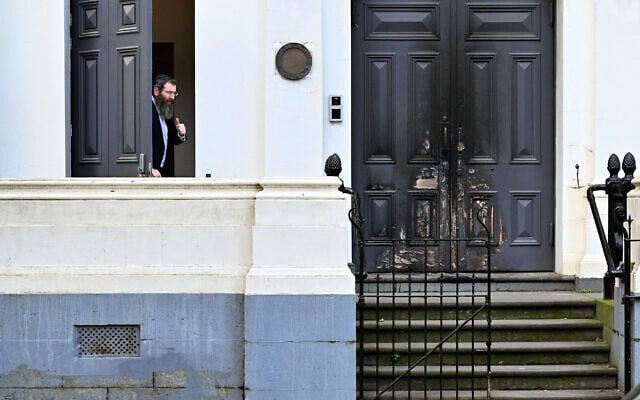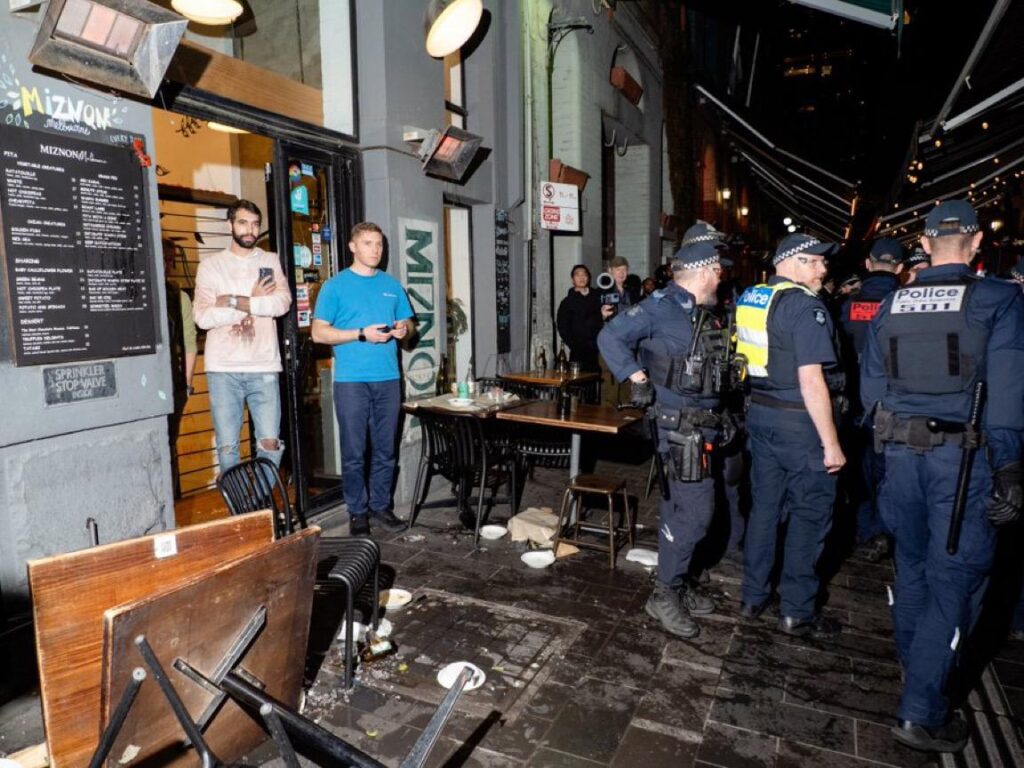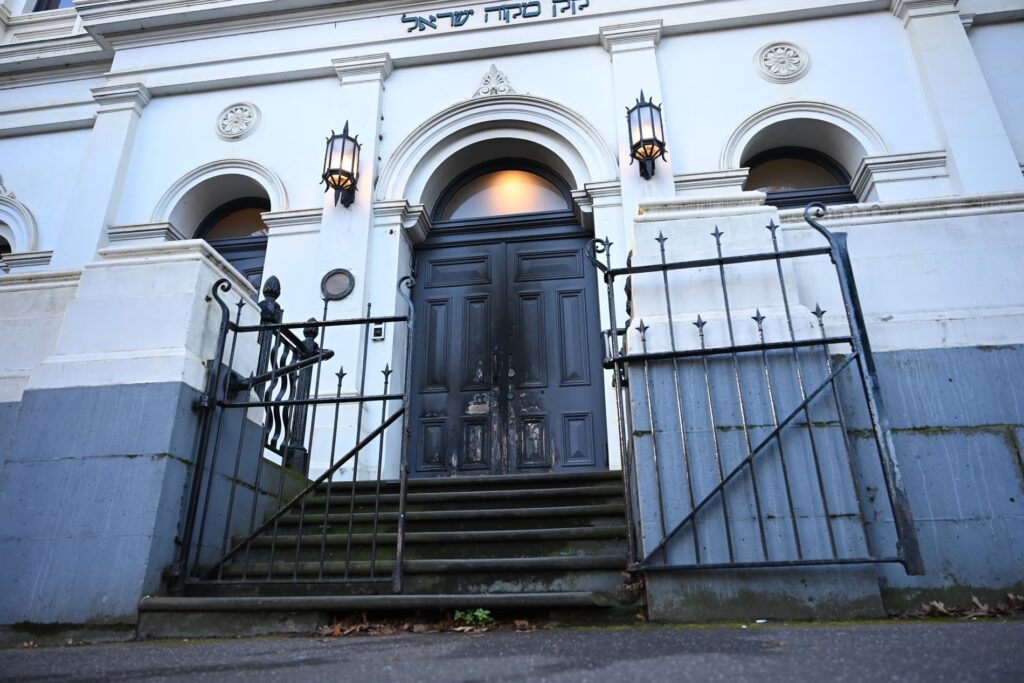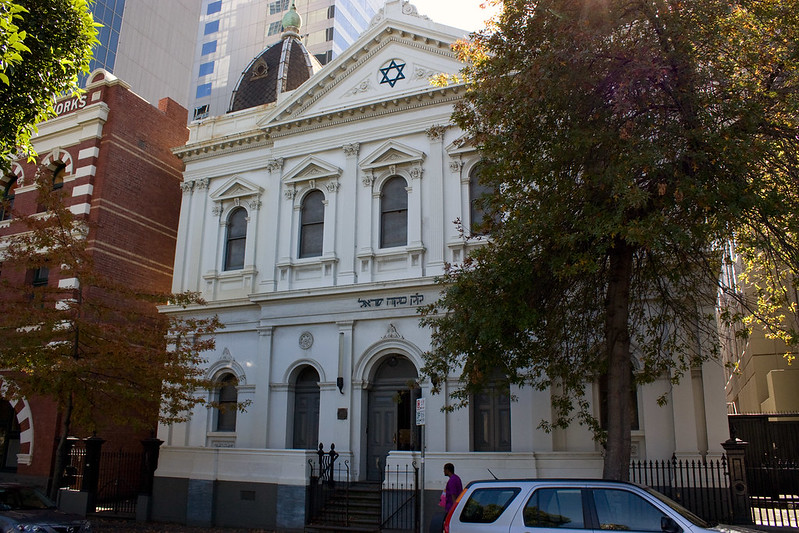UPDATES
Lebanon’s new Hezbollah-dominated government
January 24, 2020 | AIJAC staff

Update from AIJAC
01/20 #03
This Update deals with the formation of a new government in Lebanon after three months of political vacuum there – a government that is ostensibly technocratic but is actually dominated by individuals affiliated with the Shi’ite terrorist group and Iranian proxy Hezbollah, the main power broker in Lebanon for many years.
It also features an important new article on the state of US-Iranian tensions in the wake of the killing of Iranian arch-terrorist Gen. Qassem Soleimani at the beginning of this month.
We lead with an analysis of Lebanon by the always insightful journalist, author and academic Dr. Jonathan Spyer. Spyer notes that the new government is ostensibly a response to demands by Lebanese protestors, who have been demonstrating in the streets for months, for a technocratic government to fix Lebanon’s deteriorating economy, but will not satisfy many since it is actually a government of Hezbollah-affiliated individuals, not technical specialists. He notes that it is also a change from Hezbollah’s long-standing preference to remain ostensibly in the background and let others head the government, while wielding effective control behind the scenes. For the details, as well as his discussion of what this means for Israel, CLICK HERE.
Next up is US-based Arab political affairs commentator Hussein Ibish, who argues that Hezbollah must know this new government cannot succeed. Ibish also stresses Hezbollah’s preference to avoid taking direct responsibility for Lebanon’s day to day governance, leaving that to others, and says that the new Hezbollah-dominated government must mean Hezbollah was left without a better option. But, he argues, Hezbollah may not even want it to succeed in tackling Lebanon’s multiple crises, hoping its failure will lead to a return to the pre-protest status quo where Hezbollah wielded control behind the scenes, but was not ostensibly the government. For his complete argument, CLICK HERE.
Finally, American commentator and veteran foreign affairs journalist Cliff May takes on those who warned that the killing of senior Iranian general and terrorism coordinator Qassem Soleimani took the US and Iran “to the brink of war.” May argues that this ignores the fact Iran has acted as if it has been at war with the US for many years, and Soleimani himself had organised operations which killed at least 600 US soldiers. May goes on to note that what Iran was waging is what is called “grey-zone war”, involving asymmetric tactics and extensive use of proxies, and in order to create a strategy to fight back against it, the first order of business is to recognise its existence. For May’s important column in full, CLICK HERE.
Readers may also be interested in…
- An AIJAC video of highlights from the World Holocaust Forum in Jerusalem yesterday, in which world leaders gathered to mark 75 years since the liberation of Auschwitz.
- A report that US President Trump will shortly announce the details of his long-awaited “deal of the century” Israeli-Palestinian peace plan, with Israeli PM Binyamin Netanyahu and Opposition Leader Benny Gantz to visit Washington next Tuesday to discuss the plan.
Hezbollah-dominated government emerges in Lebanon
The new government is the product of escalating popular protests under way since October 15. The protests are in response to Lebanon’s dire economic state.
Jerusalem Post, JANUARY 23, 2020 21:22
For the first time since the departure of Syrian troops from Lebanon in 1990, the latter country has a government in which only Hezbollah and its allies are represented.
This is likely to have a significant negative effect on Beirut’s efforts to engage international partners and donors in order to alleviate the acute financial crisis facing the country. It will also impact on Israeli strategic planning vis-à-vis Hezbollah.
The new government is the product of escalating popular protests underway since October 15. The protests are in response to Lebanon’s dire economic state.
Demonstrators were demanding the formation of a government of “technocrats” qualified to address the urgent issues facing the country and untainted by contact with Lebanon’s enormously corrupt political parties. The new government appears to be an attempt to create the superficial appearance of such an administration. Its 20 ministers were presented by Prime Minister Hassan Diab as “specialists,” nonpartisan and without loyalties to this or that political bloc.
Few Lebanese are likely to be convinced by this claim. The “specialists” in question are individuals whose names were put forward by the political parties. The composition of the new government emerged in a process of wrangling and horse-trading between these parties.
But, crucially, parties and movements broadly associated with the West and with Saudi Arabia stayed out of the negotiations. Individuals linked to prominent pro-Western and anti-Iranian political trends, such as the former prime minister’s Mustaqbal (Future) Movement and the Christian Lebanese Forces, are not to be found among the new ministers. The Progressive Socialist Party of Lebanese Druze leader Walid Jumblatt is also not represented.
The government that has emerged from this process comprises individuals linked to movements that are part of only one of the existing power structures – the one associated with Hezbollah and Iran.
The new administration is being described by Lebanese commentators as a government of “one color,” Lebanon’s first of this kind. The color is that of Hezbollah and Iran’s banners.
 The new Lebanese government is ostensibly a response to demands from protestors for a government of “technocrats” – but few of them are likely to find it satisfactory.
The new Lebanese government is ostensibly a response to demands from protestors for a government of “technocrats” – but few of them are likely to find it satisfactory.
Hezbollah itself controls only two ministries in the new government. But the Christian Free Patriotic Movement, led by Gebran Bassil, and the Shia Amal movement, both closely associated with Hezbollah, control much of the rest. Smaller parties also associated with this bloc make up the remainder.
In this regard, Diab’s emergent government constitutes for the first time an administration that reflects the long-standing power reality in Lebanon. Hezbollah has long dominated the key nodes of power in Lebanon – in the military and intelligence fields. Its influence is also profound in the economic sector. The overt, formal political administration in the country will now reflect this.
Over the last decade and a half, Hezbollah has gradually removed all obstacles to its exercise of full-spectrum dominance in Lebanon. In a trial of strength in May-June 2008, it brushed aside an attempt by West-aligned forces to challenge its will by force. Hezbollah’s 50,000-strong armed forces obey the edict of no government in Beirut. On October 31, 2016, long-standing Hezbollah ally Gen. Michel Aoun assumed the presidency of Lebanon.
Three of Lebanon’s four intelligence services – the General Directorate of General Security, the Military Intelligence Directorate and the State Security Directorate – are headed by individuals appointed by Aoun and approved by Hezbollah. The fourth, the Internal Security Forces, once constituted a potent Sunni-led intelligence organization, associated with anti-Syrian and anti-Hezbollah forces. Today, headed by Imad Othman, it no longer plays this role.
Following the elections of May 2018, Hezbollah and its allies dominated the legislature and executive. They controlled 74 seats in the 128-member parliament, and 19 of 30 cabinet portfolios. But until the resignation of prime minister Saad Hariri in October 2019, the facade of a coalition government continued. This situation was amenable to the Hezbollah-controlled deep state. It enabled normal relations with international institutions, including financial ones, and ensured the continued flow of US and European aid.
As of this week, however, the ambiguity appears to have cleared. Formal power in Lebanon now coincides with real power.
SINCE THE war of 2006, a body of opinion has emerged in Israel according to which, in the event of a future conflict ignited by Hezbollah, Israel should abandon the paradigm by which the Lebanese state is seen as a helpless but blameless hostage of the Shia terrorist group.
Representing this view, then-education minister and current Defense Minister Naftali Bennett said in May 2018, following significant electoral gains by Hezbollah and its allies, that henceforth “the State of Israel will not differentiate between the sovereign state of Lebanon and Hezbollah, and will view Lebanon as responsible for any action from within its territory.”In 2006, the government of prime minister Fouad Siniora was orientated toward the West. Israel thus faced the difficult task of chasing Hezbollah in Lebanon, while avoiding harm to the Lebanese state infrastructure. The results were mixed. It has since become apparent that senior Iranian Revolutionary Guard Corps (IRGC) commanders, including the late Gen. Qasem Soleimani, were present in Lebanon during that war, directing the campaign of their Lebanese franchise.
Given the events of this week in Lebanon, any such attempt at differentiation is unlikely to be repeated. Rather, in a future contest between Israel and Hezbollah/Iran, the state of Lebanon under its Hezbollah-dominated government will constitute the enemy. This, in turn, will enable Israel to exercise the full range of options available to it from a conventional military point of view.
It is not clear whether such a war would include a formal declaration of war between Israel and Lebanon. If it did, such a declaration would be highly misleading. A conflict of this kind would not in any meaningful sense constitute a war between two sovereign states. Rather, as recent events in Iraq, Syria and Lebanon have made clear, the praxis of the IRGC is to use its franchises to construct states within states. These structures then seek to occupy the formal body of the state, turning its independence and sovereignty into a fiction. This process appears this week in Lebanon to have reached its apogee. The formal state, up to and including the highest bodies of government, is now operated solely and overtly by Iran via its franchise, with the allies and clients of that franchise. This produces clarity, with its many attendant benefits.
Dr. Jonathan Spyer is Executive Director of the Middle East Center for Reporting and Analysis (MECRA), a research fellow at the Jerusalem Institute for Strategic Studies (JISS), a fellow at the Middle East Forum and a freelance security analyst and correspondent at IHS Janes.
Lebanon’s New Government Is Set Up to Fail
Hezbollah, Prime Minister Hassan Diab’s main backer, doesn’t want him to succeed.
By Hussein Ibish
 Hezbollah leader Hassan Nasrallah: Hezbollah set up this government in violation of its long-standing preference to avoid direct responsibility for Lebanon’s dysfunctional government
Hezbollah leader Hassan Nasrallah: Hezbollah set up this government in violation of its long-standing preference to avoid direct responsibility for Lebanon’s dysfunctional government
After more than three months of political wrangling amid the backdrop of massive street protests, Lebanon finally has a new government. But the cabinet assembled by Prime Minister Hassan Diab, almost entirely composed of Hezbollah’s allies, is unlikely to succeed.
Indeed, it may have been set up to fail by its own backers.
Hezbollah cannot be comfortable with an arrangement that puts it—along with its Maronite allies in the Free Patriotic Movement—front and center of the new government. The Iran-backed group has historically preferred a time-tested arrangement of power without responsibility: its rivals nominally ran the government, but allowed Hezbollah to maintain its independent militia and to exercise its will on all issues it deemed crucial.
In the new setup, Hezbollah finds itself in the unfamiliar position of responsibility. This means it risks being directly blamed for the state’s dysfunction, which it can do very little to fix.
Even most credible and competent government, with full public support, would be hard-pressed to deal with Lebanon’s multiple crises, especially with a looming default on bond payments. The lira has collapsed in value and banks have been forced to restrict the ability of ordinary account holders to withdraw their money, particularly in U.S. dollars. Basic services are moribund. The supply of electricity has become intermittent, and a telecommunications crisis, including Internet outages, seems probable.
Diab’s government was born under a bad sign—several bad signs, in fact. His nomination was met with intense opposition from the protesters, and this has grown even more intense since the 20-member cabinet was announced. It is also politically lop-sided: instead of the traditional blend of pro- and anti-Hezbollah factions, Diab is banking on only one side of the Lebanese equation.
Worse, the formation of the cabinet was midwifed by discredited political figures closely associated with the Bashar al-Assad regime in Syria, including Jamil Al-Sayyed, who was driven out of the political centerstage after the assassination of former Prime Minister Rafik Hariri. If the growing Iranian influence in Beirut wasn’t bad enough, many Lebanese will be even more alarmed and dismayed by the return of Syrian leverage in their country’s politics.
It is certain to inflame the protesters, who for months have been demanding radical reforms and denouncing the entire social and political elite of the country. One of their few clear demands has been for a technocratic government of experts rather than political cronies. Diab claims to have assembled exactly such a “rescue squad,” but in fact his cabinet is almost composed mainly of political operatives or their proxies. Not even the large number of women in prominent roles will buy him much credibility on the street.
Nor can Diab expect much foreign help in bailing Lebanon out of its financial problems. The U.S. and Europe will be very cautious in providing aid to a pro-Hezbollah government. Diab says he’s headed to the Gulf Arab states soon, but they too will be uncomfortable with a pro-Iranian militia calling the shots in Beirut.
None of this can have escaped the attention of Hezbollah and its allies: They must know that this government cannot last very long. But they did not have a better option.
All political elites have been discomfited by the protests but Hezbollah stood to lose more than most from real reform. Setting Diab up for failure is the first step in a process that, it hopes, will restore the status quo. This has been Hezbollah’s goal since the protests began last fall. Its ideal outcome was for former Prime Minister Saad Hariri, who resigned in October, to return to the job.
Now, Hezbollah is likely calculating that once Diab fails, it can step forward and propose, in the name of national unity, the reinstatement of Hariri, or the elevation of another politician acceptable to the international community—who would allow things to go back to the way they used to be.
The main obstacle to this will probably be the protesters, who may well hold out for a more thorough-going reform of Lebanon’s political structures and traditions. If so, Hezbollah will have to offer something more substantial than Diab’s government as a sacrificial lamb.
Hussein Ibish is a senior resident scholar at the Arab Gulf States Institute in Washington.
Grey zone is the new black
Too many smart people don’t grasp that a war is being waged against us
By Clifford D. May
Washington Times, Jan. 22, 2020
 Those who suggested the US killing of Gen. Qassem Soleimani on Jan. 3 risked war are ignoring the fact that he was already leading a war on the US, albeit a limited and stealthy one.
Those who suggested the US killing of Gen. Qassem Soleimani on Jan. 3 risked war are ignoring the fact that he was already leading a war on the US, albeit a limited and stealthy one.
You heard it last week from smart people on both the left and right. President Trump’s droning of Qassem Soleimani put America “on the brink of another war,” wrote Martin Indyk, a distinguished fellow at the Council on Foreign Relations. Echoed Fox News’ Tucker Carlson: “It looked like we were on the brink there!”
Let’s think about that, shall we? Gen. Soleimani was the commander of the Quds Force, an army that operates beyond Iran’s borders, hunting and killing anyone and everyone Iran’s rulers deem enemies.
He commanded both uniformed Iranian soldiers and militias comprised of Afghans, Pakistanis, Uzbeks and other Shiites of the violent extremist persuasion. He facilitated the killing of over 600 Americans and hundreds of thousands of others. Can we agree that when he flew to Baghdad on Jan. 3, it probably wasn’t to grab dinner and a movie with a friend?
In response to the general’s unexpected demise, Supreme Leader Ali Khamenei launched missiles at Iraqi bases hosting American troops who had been warned to take cover. Ayatollah Khamenei then promptly announced he was finished – at least for now.
So, on this basis, is it more logical to conclude that President Trump (1) put us “on the brink” of war, or (2) that he began to re-establish the deterrence the U.S. has lost after years of being slapped by Iran’s rulers and then turning the other cheek?
Perhaps you say, okay but what if the Ayatollah had decided to climb the escalation ladder? Wouldn’t American boots have been in downtown Tehran by Valentine’s Day? No. President Trump would have considered a range of “off-shore” options, from sinking the Ayatollah’s navy in port, to wiping out his combat aircraft on the ground, to destroying facilities designed for the illicit development of nuclear weapons.
That brings us to the second and even more consequential misconception implied by the “brink of war” theory: that until January 3 we were at peace.
Forty-one Januaries ago, Iran underwent an Islamic Revolution led by Ayatollah Ruhollah Khomeini. In April of 1979, Iran was declared an Islamic Republic. In the fall, the Ayatollah’s followers attacked the “Great Satan” by seizing the U.S. embassy and taking American diplomats hostage.
Those hostages were released 39 years ago this month after the election of a new American president who, the theocrats feared, might respond more effectively than had his predecessor. But for their acts of war, Iran’s rules never paid a price.
So they continued to wage what is known in Wonk World as a “grey-zone” war. Such wars seldom start with a declaration of war and never end with the surrender of a sword. Among the distinguishing characteristics: the use of hybrid or asymmetric weapons and tactics, including the utilization of proxies to establish plausible deniability.
In April of 1983, a suicide bomber hit the U.S. embassy in Beirut, killing 63 people, the deadliest attack on a U.S. diplomatic mission until that time. U.S. District Court Judge Royce Lamberth determined that the bombing was carried out by Hezbollah, funded and instructed by Iran’s rulers.
In October of the same year, Hezbollah bombed buildings housing U.S. and French service members in Beirut, killing 241 U.S. military personnel and 58 French soldiers.
In December, terrorists backed by Tehran bombed the U.S. and French embassies in Kuwait City. A Kuwaiti government spokesman called the attacks “the first concentrated Iranian operation to export the revolution and destabilize the Persian Gulf.”
Over the years since, other attacks against American embassies, forces and civilians followed in Lebanon, Saudi Arabia, Iraq and elsewhere.
What did Iran’s rulers achieve? Today, Lebanon is ruled – for all intents and purposes – by Hezbollah, their proxy. The regime also holds sway in Syria, instructs Hamas and Islamic Jihad in Gaza, backs the Houthi rebels in Yemen, and intends to dominate Iraq. Long term, “Death to America!” is the intention. The acquisition of nuclear weapons and missiles to deliver them would provide a capability.
In his recently published book, “Call Sign Chaos,” former Defense Secretary Jim Mattis recalls that when he led U.S. Central Command from 2010 to 2013, he understood that “we faced two principal adversaries: stateless Sunni Islamist terrorists and the revolutionary Shiite regime of Iran, the most destabilizing country in the region.” He adds: “Iran was by far the more deadly of the two threats.”
Gen. Mattis was disappointed when President Obama treated the foiled 2011 Iranian plot to bomb a restaurant in Washington — yet another “act of war” — as merely “a law enforcement violation, jailing the low-level courier,” and making no attempt to hold the regime accountable.
Mr. Obama went on to conclude a deal that gave Iran’s rulers a $150 billion windfall. If they were appeased, they didn’t show it.
President Trump exited the deal. France, Britain and Germany remained. Nevertheless, in June, 2018, French authorities foiled a plot by Tehran to bomb a gathering of Iranian dissidents in Paris.
In response, the French froze the assets of two suspected regime intelligence operatives. You think that caused Gen. Soleimani and Ayatollah Khomenei to shiver in their shoes?
Here’s what we should know by now: Grey-zone war is the new normal, the new black, if you will. After four decades, we ought to have settled on a strategy to counter this threat.
But when a distinguished scholar on the left and a popular television host on the right don’t even grasp the reality – insisting instead that striking back at those attacking us could put us on “the brink” of war — it becomes apparent why we have made so little progress in this conflict.
Clifford D. May is founder and president of the Foundation for Defense of Democracies (FDD) and a columnist for the Washington Times.





